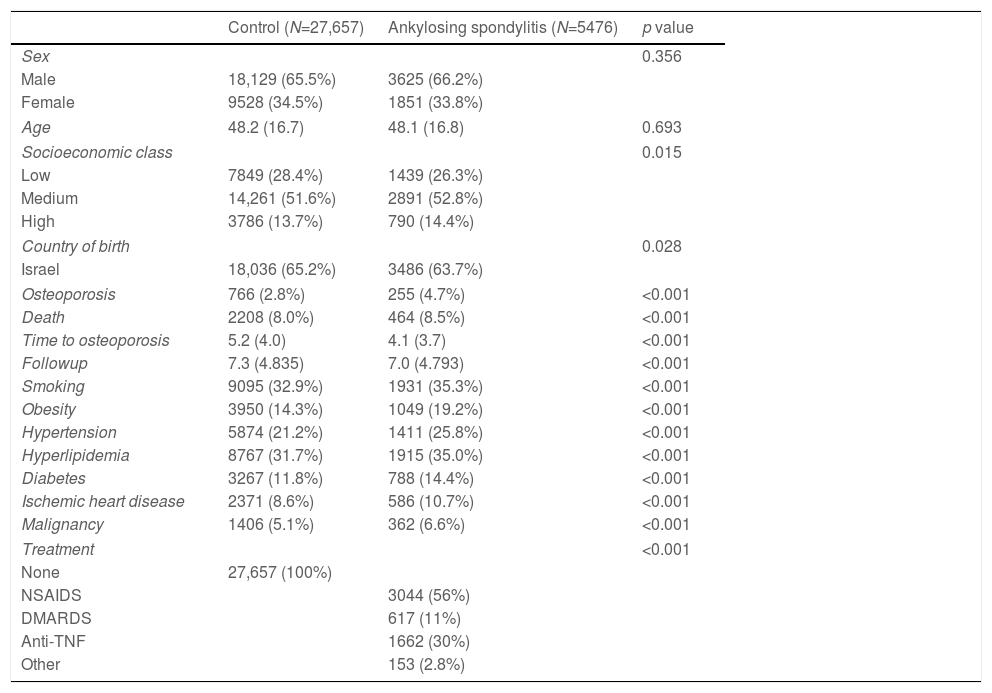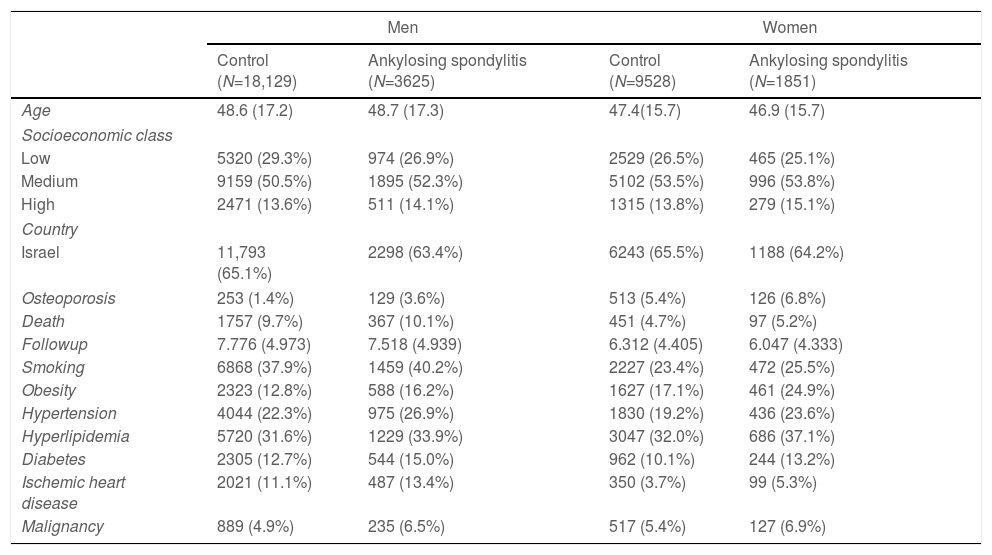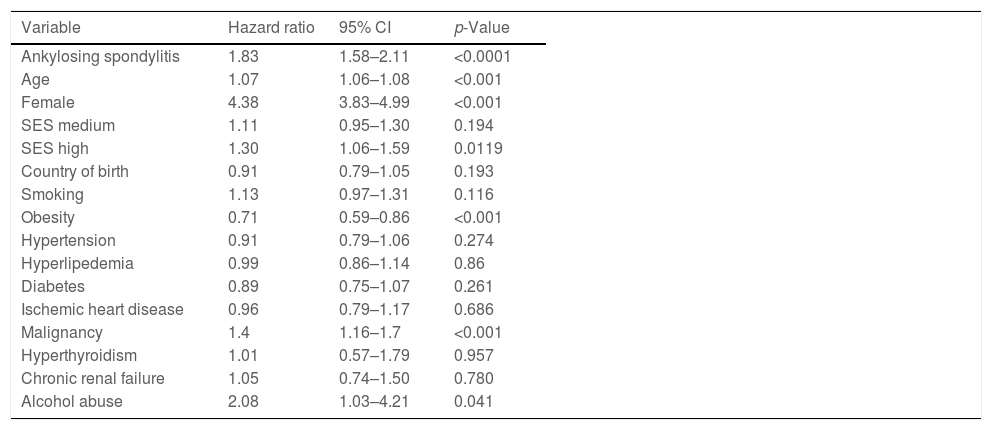Ankylosing spondylitis (AS) is associated with increased bone turnover and systemic inflammation. Osteoporosis is common but frequently underappreciated in AS, studies regarding the incidence of osteoporosis in AS are limited and based on small cohorts. The aim of this study is to assess the risk of osteoporosis in patients with AS compared to matched controls.
MethodsA population based retrospective cohort study using data retrieved from a large electronic medical record in Israel, the Clalit health services. Included patients that were diagnosed with AS from January 2002 to December 2018 were followed for development of osteoporosis. The incidence of osteoporosis was compared between AS and controls and a logistic regression model was used to assess the interaction between AS and osteoporosis.
ResultsThe study included 5476 AS patients, and 27,657 age- and sex-frequency matched controls. The incidence of osteoporosis in AS patients was significantly higher than controls (4.7% vs 2.8%, p<0.001) in the whole cohort as well as when stratified by sex. Osteoporosis developed earlier in patients with AS versus controls (4.1 vs 5.2 years, p<0.001). In multivariate analysis and after adjustment to several potential confounders, AS was found to independently associated with osteoporosis (HR 1.83, 95%CI 1.58–2.11, p<0.0001).
ConclusionsOur study confirms the higher incidence and earlier development of osteoporosis in patients with AS. Such finding highlights the increased need of awareness and earlier detection of such comorbidity allowing prompt treatment to prevent undesired sequalae including increased risk of fractures.
La espondilitis anquilosante (EA) se asocia a un aumento del recambio óseo y de la inflamación sistémica. La osteoporosis es común pero frecuentemente subestimada en la EA: los estudios sobre la incidencia de la osteoporosis en la EA son limitados y se basan en cohortes pequeñas. El objetivo de este estudio es evaluar el riesgo de osteoporosis en pacientes con EA en comparación con controles emparejados.
MétodosEstudio de cohorte retrospectivo basado en la población utilizando datos recuperados de un gran registro médico electrónico en Israel, los servicios de salud Clalit. Se incluyeron pacientes a los que se les diagnosticó EA desde enero de 2002 hasta diciembre de 2018 y se les hizo un seguimiento para el desarrollo de osteoporosis. Se comparó la incidencia de osteoporosis entre los pacientes con EA y los controles y se utilizó un modelo de regresión logística para evaluar la interacción entre la EA y la osteoporosis.
ResultadosEl estudio incluyó a 5.476 pacientes con EA y a 2.7657 controles emparejados por edad y sexo. La incidencia de osteoporosis en los pacientes con EA fue significativamente mayor que en los controles (4,7% frente a 2,8%; p<0,001) en toda la cohorte, así como cuando se estratificó por sexo. La osteoporosis se desarrolló antes en los pacientes con EA frente a los controles (4,1 frente a 5,2años; p<0,001). En el análisis multivariado y tras ajustar varios posibles factores de confusión, se observó que la EA se asociaba de forma independiente con la osteoporosis (HR: 1,83; IC95%: 1,58-2,11; p<0,0001).
ConclusionesNuestro estudio confirma la existencia de mayor incidencia y el desarrollo más temprano de la osteoporosis en pacientes con EA. Este hallazgo pone de manifiesto la necesidad de una mayor concienciación y una detección más temprana de esta comorbilidad, lo que permitirá un tratamiento rápido para evitar secuelas no deseadas, como el aumento del riesgo de fracturas.











